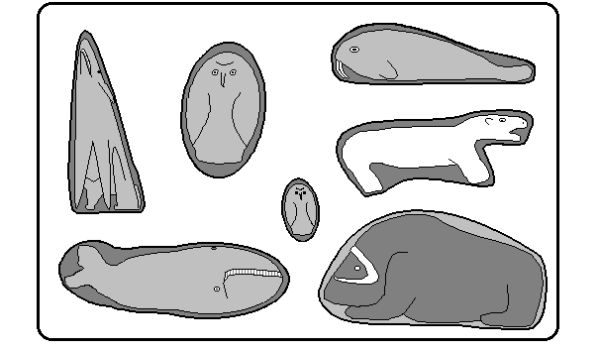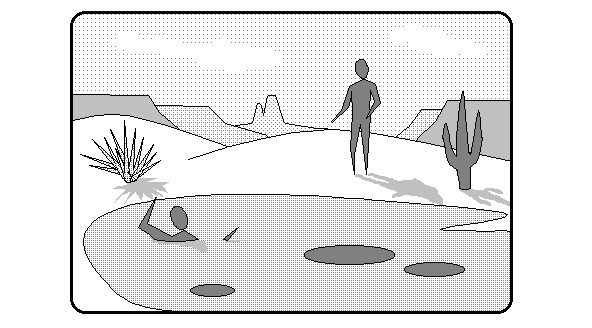Recognizing Rationalizations
We often use rationalizations to justify unhealthy activities we have difficulty giving up. This is certainly common with substance abuse. We may not even recognize how we are fooling ourselves with our excuses and alibis. If we can recognize our rationalizations, we might catch ourselves before doing further damage. By identifying common types of rationalizations, this blog seeks to support this understanding and to help prevent relapses.
Definitions and Examples
We start by defining “rationalization” and seven common types of rationalization. Note that “rationalization” is the all-encompassing or catchall category, and the other terms are specific types of rationalizations. We also provide examples for each of these types, to illustrate the concepts.
Practicing Identification of Types
We need to practice developing our recognition and understanding of how these rationalizations play out in our lives. For this practice, we have a multiple choice exercise. Readers are asked to identify the type of rationalization that best fits each of the twenty examples. Some of the examples may have two or three more-or-less correct answers, but we are looking for the best specific answer. In other words, you might hit the target, but we are aiming for the bull’s-eye. For example, if you guessed “rationalization” for all the following examples, you would hit the target every single time, but usually not the bull’s-eye.
Of course, the practical application of this exercise does not require the identification of the specific type of rationalization. This aspect of the exercise is introduced simply to engage the participant in a more active manner.
Translating the Rationalizations
The third column of the exercise is a challenge to the rationalization. This involves a translation of what the rationalization really is saying. This typically calls out the absurdity of the rationalization. I have attempted to introduce some humor into the translation or challenge as a method of helping the medicine go down. Recognizing our con-job on ourselves can be a bitter pill to swallow.
The Evolution of This Exercise
This exercise has evolved out of my years of doing substance abuse work in private practice. Several of the examples have come from actual responses given by my clients, whereas others have been adapted or modified from those responses. I have not given specific credit to those clients, as I wish to protect their anonymity. They should feel honored with the knowledge that it is plagiarism, not imitation, that is the highest form of flattery.
Sharing the Insights
If therapists or counselors wish to utilize this exercise, they may do so with the proper recognition of credits. I would ask that you identify me as the author and www.roguepsychologist.com as the source.
By the way, if you wish to have a list of the official correct answers for the exercise, you’ll have to leave a request in the comment section following the post, preferably with some constructive feedback. This is just my way of encouraging the readers to interact more actively with this site.
Types of Rationalizations
Rationalization – an argument that is not quite relevant, used in order to explain away, excuse, or justify a behavior that really doesn’t make sense.
The following are various types of rationalizations, which often are used to justify substance abuse:
Minimization – minimizing or downplaying some aspect of your drug or alcohol use in order to underestimate the likelihood or seriousness of the problem (e.g., “What harm is just one more drink going to do, anyway?”)
Exaggeration – overestimating other aspects of a substance-related incident in order to lessen your own personal responsibility for causing the problem (e.g., “If I’d only fixed that tail light, I would never have been stopped and gotten that DUI.”)
Undergeneralization – failure to recognize the similarity between your own substance-related problems and that of others who abuse or depend on substances (e.g., “I don’t abuse alcohol. It’s not like I drink every day.”)
Overgeneralization – addressing your substance use so broadly as to overlook the particular aspects of it that cause problems (e.g., “Everybody overindulges now and then. I just got caught – that’s all.”)
Faulty Comparison – comparing your own substance problems, use pattern, or drug of choice to something worse in order to make your own problems or responsibility seen minor by comparison (e.g., The cops ought to be chasing the real criminals – robbers, murderers, rapists – rather than picking on ordinary citizens like you and me.”)
Projection of Blame – avoiding or minimizing your own personal responsibility for substance abuse by focusing either on how someone else caused you to behave that way (e.g., “Now, see what you made me do!”) or on how someone else overreacted or responded unfairly to your behavior (e.g., “Those cops hanging out at the strip are just waiting for you to slip up.”)
Denial – overlooking or refusing to recognize your substance related problem, which appears obvious to most people (e.g., the tobacco company executives stating to Congress that “no one’s actually proven that nicotine is addictive.”)
Examples
[ezcol_1third]STATEMENT[/ezcol_1third] [ezcol_1third]TYPE OF RATIONALIZATION[/ezcol_1third] [ezcol_1third_end]TRANSLATION OR CHALLENGE[/ezcol_1third_end]
[ezcol_1third]”The cops and the courts are just out to get you and your money – that’s all there is to it.”[/ezcol_1third] [ezcol_1third]A. Projection of Blame
B. Minimization
C. Overgeneralization
D. Exaggeration[/ezcol_1third] [ezcol_1third_end]”I’d rather feel like a helpless victim of an unfair system than feel guilty about how my drunken driving put others at risk.”[/ezcol_1third_end]
[ezcol_1third]”It’s only a short drive. Nothing’s going to happen.”[/ezcol_1third] [ezcol_1third]A. Overgeneralization
B. Undergeneralization
C. Minimization
D. Rationalization[/ezcol_1third] [ezcol_1third_end]”I am willing to take repeated risks because I do not believe that the law of averages applies to me.”[/ezcol_1third_end]
[ezcol_1third]”I only get drunk when my wife’s busy or out-of-town and the kids are at their mom’s. I’m not hurting anybody.”[/ezcol_1third][ezcol_1third]A. Minimization
B. Exaggeration
C. Projection of Blame
D. Faulty Comparison[/ezcol_1third] [ezcol_1third_end]”I really only care about getting caught, not about how I am letting myself and others down by not taking my recovery seriously.”[/ezcol_1third_end]
[ezcol_1third]”Smoking pot doesn’t mess up your driving like alcohol does.”[/ezcol_1third] [ezcol_1third]A. Faulty Comparison
B. Projection of Blame
C. Overgeneralization
D. Pot Calling the Keg Black[/ezcol_1third] [ezcol_1third_end]”I’m going to find something else worse to compare marijuana to, so that I can ignore the fact that marijuana impairs functioning, too.”[/ezcol_1third_end]
[ezcol_1third]”I’m not an alcoholic – I don’t drink before five o’clock.”[/ezcol_1third] [ezcol_1third]A. Projection of Blame
Be. Faulty Comparison
C. Undergeneralizations
D. Exaggeration[/ezcol_1third] [ezcol_1third_end]”I’m only a nighttime alcoholic – that doesn’t really count.”[/ezcol_1third_end]
[ezcol_1third]”I can control my drinking if I want to – I’m not an alcoholic.”[/ezcol_1third] [ezcol_1third]A. Faulty Comparison
B. Exaggeration
C. Denial
D. Either A or C[/ezcol_1third] [ezcol_1third_end]”Your Honor, I choose to drink irresponsibly – I only abuse alcohol, I’m not dependent on it.”[/ezcol_1third_end]
[ezcol_1third]”I know when I’m intoxicated, and I’m actually a more careful driver then.”[/ezcol_1third] [ezcol_1third]A. Projection of Blame
B. Rationalization
C. Exaggeration
D. Overgeneralization[/ezcol_1third] [ezcol_1third_end]”I can compensate for my impaired judgment, poor motor skills, and distorted perception when I drink – unlike those amateur drinkers or elderly drivers.”[/ezcol_1third_end]
[ezcol_1third]”If you’d get off my back for a change, maybe I’d cut back. Did you ever stop to think of that?”[/ezcol_1third] [ezcol_1third]A. Faulty Comparison
B. Projection of Blame
C. Exaggeration
D. Overgeneralization[/ezcol_1third] [ezcol_1third_end]”I can’t seem to find a better response to your criticism than my drinking. By blaming you for making me drink, I don’t have to feel guilty over it.”[/ezcol_1third_end]
[ezcol_1third]”It could happen to anybody. Why you giving me such a hard time for a DUI? Everybody makes mistakes.”[/ezcol_1third] [ezcol_1third]A. Minimization
B. Undergeneralization
C. Faulty comparison
D. Overgeneralization[/ezcol_1third] [ezcol_1third_end]”In saying I’m like everyone else, I refuse to recognize that I am increasing the chances of my getting into trouble with my drinking.”[/ezcol_1third_end]
[ezcol_1third]”I’ll just use this one last time. I’ll start my recovery program tomorrow.”[/ezcol_1third] [ezcol_1third]A. Rationalization
B. Exaggeration
C. Faulty comparison
D. Projection of blame[/ezcol_1third] [ezcol_1third_end]”By starting my recovery tomorrow, I’ll never have to quit, because tomorrow is always a day away.”[/ezcol_1third_end]
[ezcol_1third]”What harm is one more drink going to do?”[/ezcol_1third] [ezcol_1third]A. Faulty Comparison
B. Overgeneralization
C. Minimization
D. Projection of blame[/ezcol_1third] [ezcol_1third_end]”If I just look at one drink at a time, I don’t have to look at the overall pattern of how I get drunk.”[/ezcol_1third_end]
[ezcol_1third]”I’m already in trouble now. I might as well go all the way – I’m going to catch hell for it anyway.”[/ezcol_1third] [ezcol_1third]A. Overgeneralization
B. Rationalization
C. Projection of Blame
D. Faulty Comparison[/ezcol_1third] [ezcol_1third_end]”I don’t believe in damage control. If I mess up, that’s a good excuse to go all the way.”[/ezcol_1third_end]
[ezcol_1third]”Everybody has their own bad habits. I’m no different than anyone else.”[/ezcol_1third] [ezcol_1third]A. Minimization
B. Overgeneralization
C. Projection of Blame
D. Undergeneralization[/ezcol_1third] [ezcol_1third_end]”If I say that everyone has their own bad habits, then I can ignore how my drug addiction is ruining my life.”[/ezcol_1third_end]
[ezcol_1third]”I was just in the wrong place at the wrong time.”[/ezcol_1third] [ezcol_1third]A. Denial
B. Exaggeration
C. Undergeneralization
D. Faulty comparison[/ezcol_1third] [ezcol_1third_end]”I’d rather consider myself a victim of circumstances rather than feel responsible for the mess I got myself into by driving while intoxicated.”[/ezcol_1third_end]
[ezcol_1third]”I don’t drink anymore than anyone else does, so stop giving me a hard time.”n[/ezcol_1third] [ezcol_1third]A. Overgeneralization
B. Rationalization
C. Exaggeration
D. Projection of Blame[/ezcol_1third] [ezcol_1third_end]”All my friends drink really heavily, so I use them as my comparison group, so I don’t have to feel so bad about my drinking.”[/ezcol_1third_end]
[ezcol_1third]”Just because I’ve had a few run-ins with the law doesn’t mean that I have a drinking problem.”[/ezcol_1third] [ezcol_1third]A. Overgeneralization
B. Denial
C. Projection of Blame
D. Exaggeration[/ezcol_1third] [ezcol_1third_end]”It’s only a coincidence that every time I have been arrested I’ve been drunk.”[/ezcol_1third_end]
[ezcol_1third]”If we had only taken the interstate, we would’ve avoided that DUI checkpoint, and I wouldn’t have gotten that DUI.”[/ezcol_1third] [ezcol_1third]A. Minimization
B. Exaggeration
C. Overgeneralization
D. Faulty Comparison[/ezcol_1third] [ezcol_1third_end]”If we had taken the interstate, I probably would’ve driven faster and more recklessly, and we might all be dead now.”[/ezcol_1third_end]
[ezcol_1third]”If my probation officer wasn’t such a jerk to test me on January 2, I wouldn’t be in this mess.”[/ezcol_1third] [ezcol_1third]A. Projection of Blame
B. Minimization
C. Overgeneralization
D. Undergeneralization[/ezcol_1third] [ezcol_1third_end]”Tell me again – how was it that you got on probation?”[/ezcol_1third_end]
[ezcol_1third]”Drinking takes the edge off of my social anxiety, so what’s wrong with that?”[/ezcol_1third] [ezcol_1third]A. Faulty Comparison
B. Exaggeration
C. Projection of Blame
D. Rationalization[/ezcol_1third] [ezcol_1third_end]”I don’t have the commitment and patience to work on my social anxiety in a healthy way, so I just settle for a temporary quick fix.”[/ezcol_1third_end]
[ezcol_1third]”I wish my family would get off my case for drinking. I don’t have a problem with it. In fact, I probably wouldn’t drink that much if they just leave me alone.”[/ezcol_1third] [ezcol_1third]A. Faulty Comparison
B. Denial
C. Projection of Blame
D. Both B and C[/ezcol_1third] [ezcol_1third_end]”Alcohol must be pretty important to me in order for me not to see what is rather obvious to others. I’ll just say they can’t be objective about it, so I don’t have to recognize my problems or change my behavior.”[/ezcol_1third_end]
My thanks to the various anonymous donors whose field research and expertise made this list possible. They should view my claiming this as my own work as the highest honor. As Eddie Haskell once said, “Imitation is not the highest form of flattery – plagiarism is.”
[whohit]rationalizations used to minimize and deny substance problems[/whohit]






